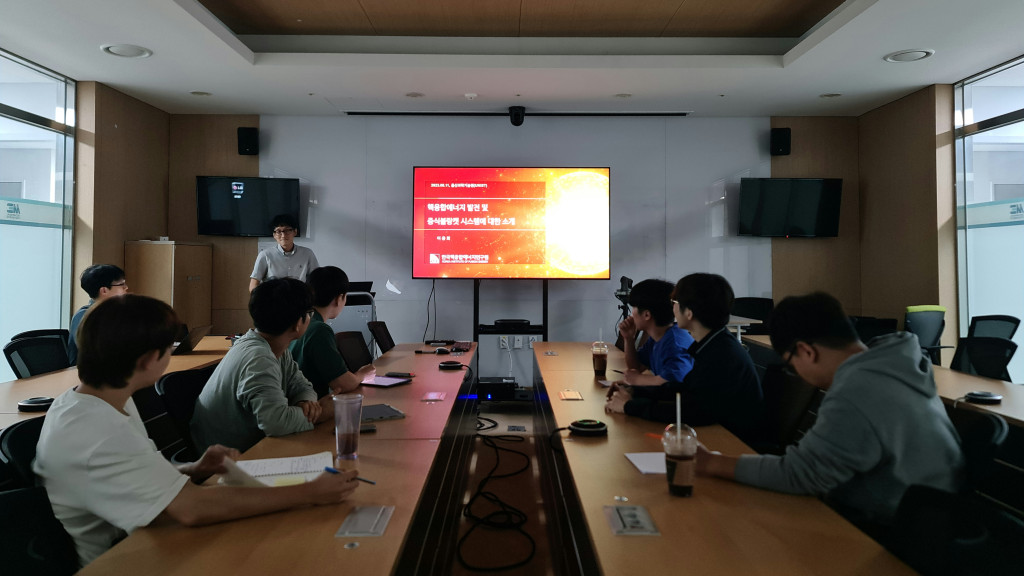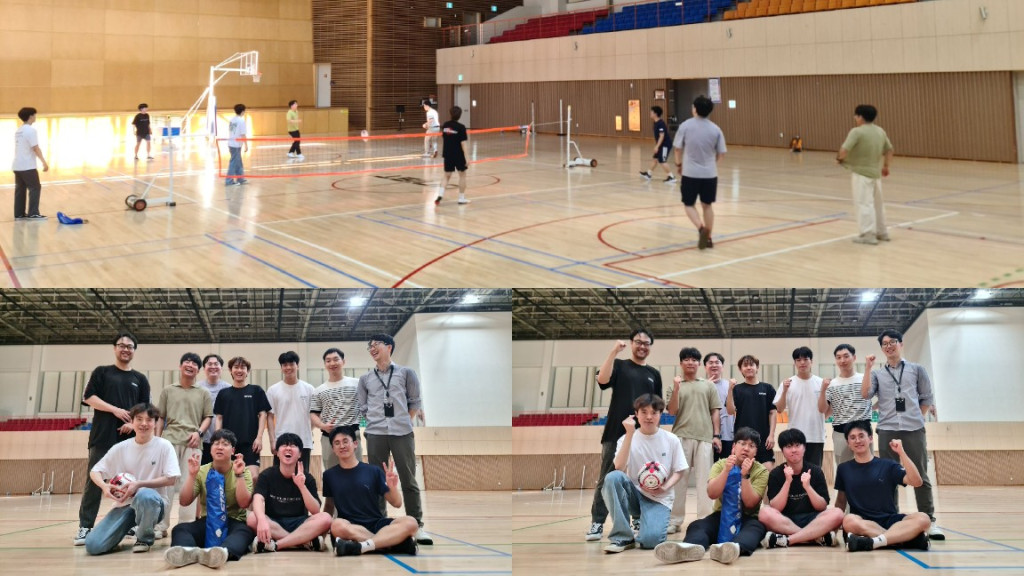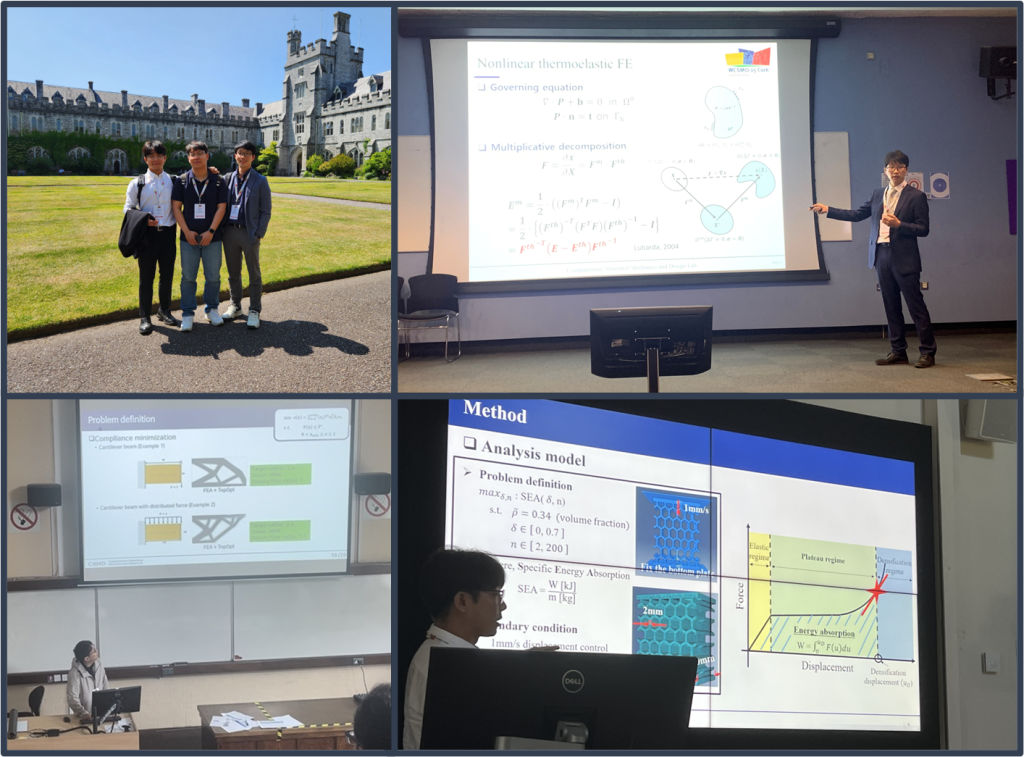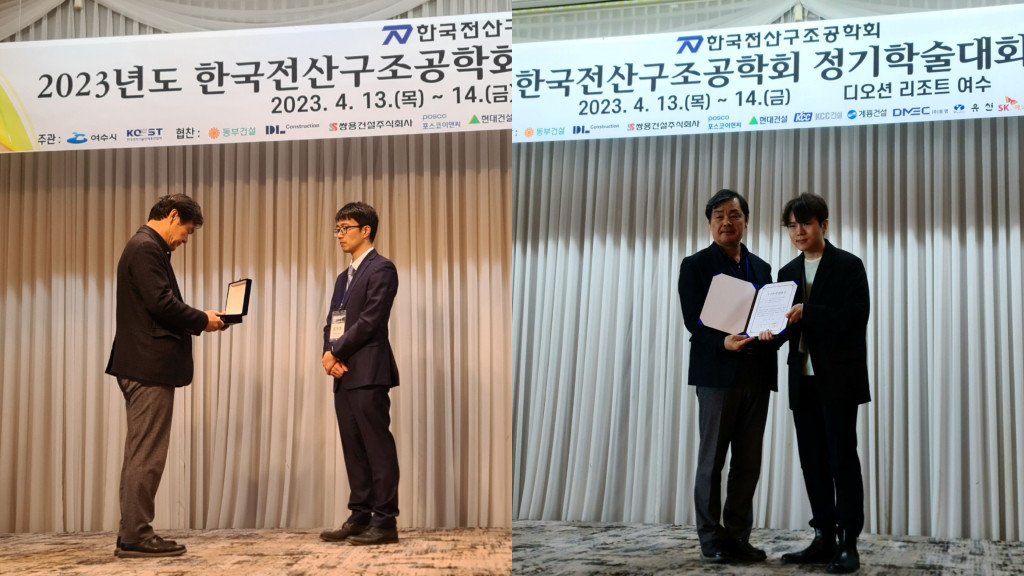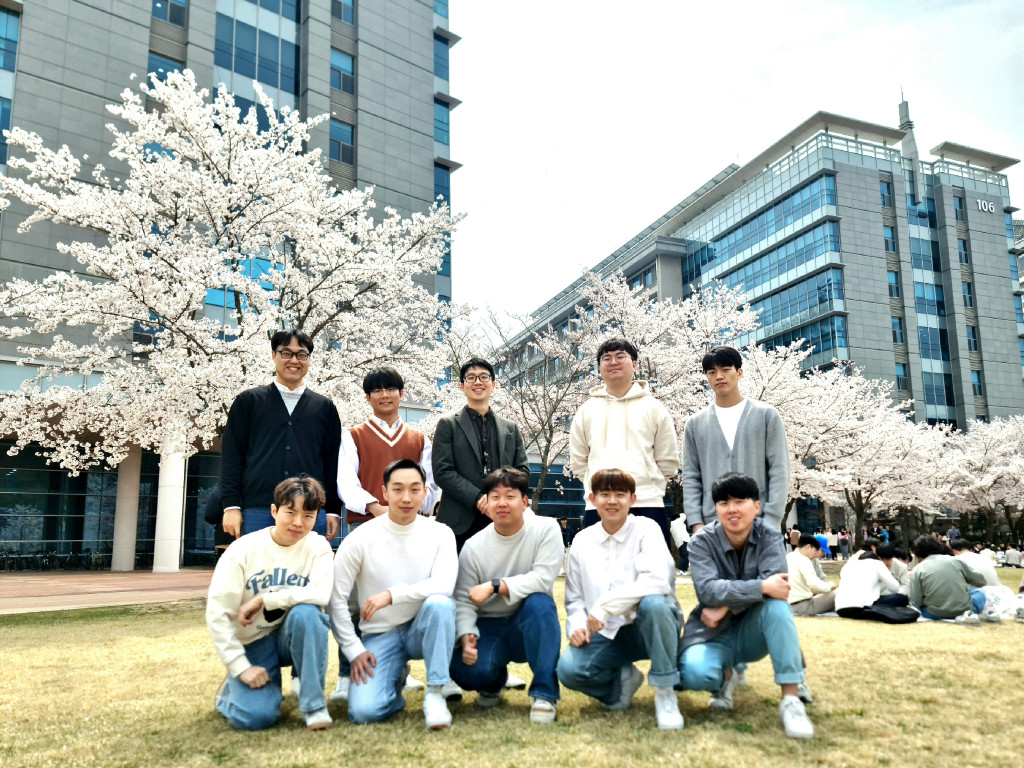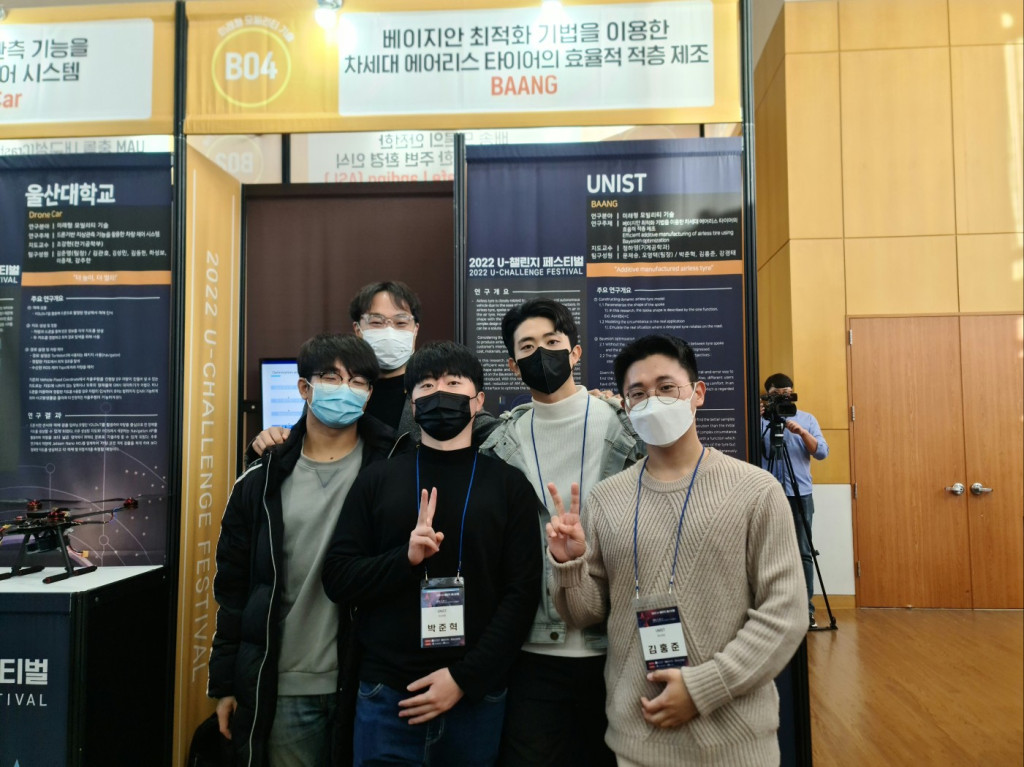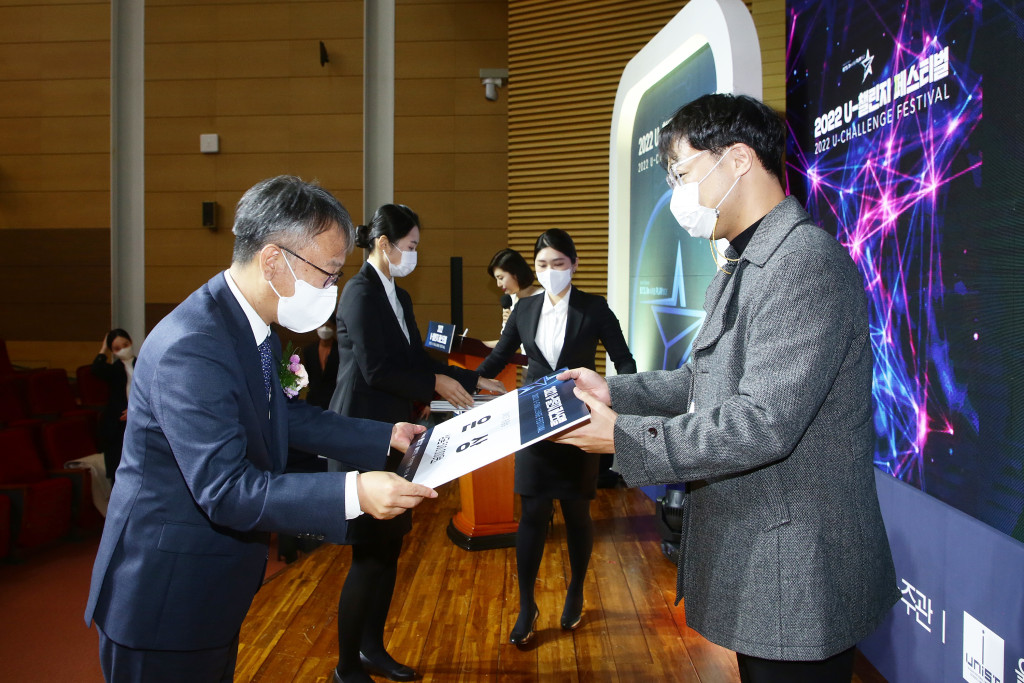제 9회 한국 멀티스케일역학회 심포지엄 2023에 참석하여 다음의 주제로 발표를 진행하였습니다.
본 학회 에서 손승완 학생이 다음의 주제로 우수포스터발표상을 수상하였습니다. 축하합니다!
– 손승완, 정하영, “Implementation of large-scale topology optimization based on FEniCSx considering parallelization scalability” (포스터)
– 오영택, 정하영, “Design of Biomimetic Material with High Energy Absorption Using Voronoi tessellation and Bayesian Optimization ” (포스터)
– 박준혁, 정하영, “Classification of topology-optimized structures with different objectives using U-net” (포스터)
– 문제승, 정하영, “Discrete Element Modeling for solid mechanics using beam bond” (포스터)
